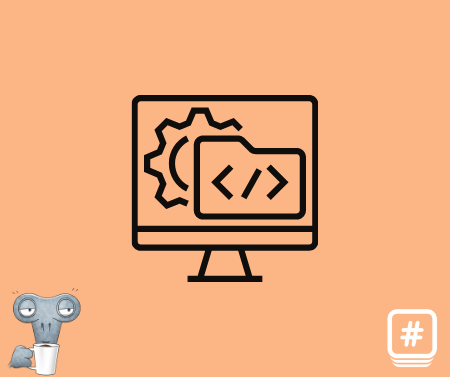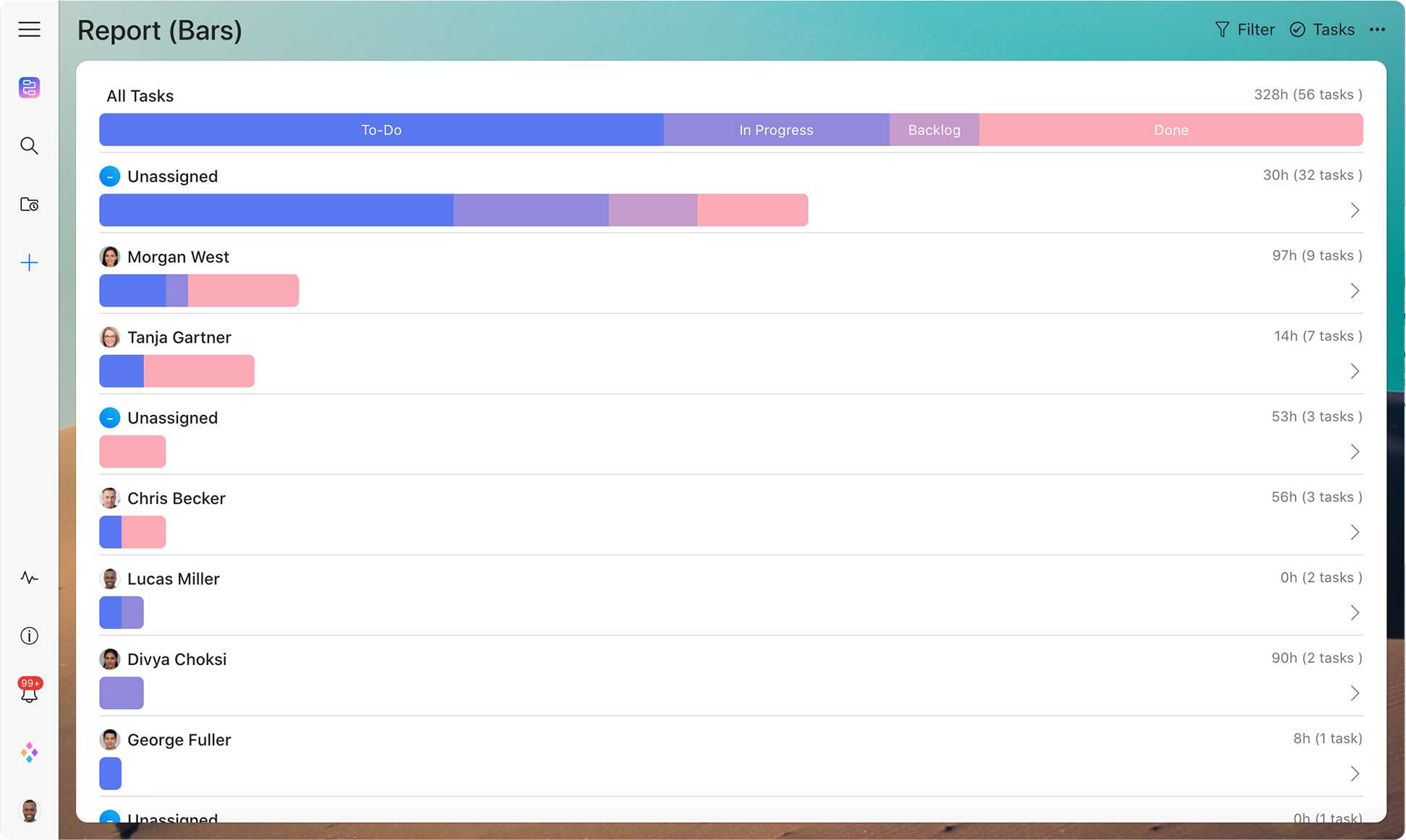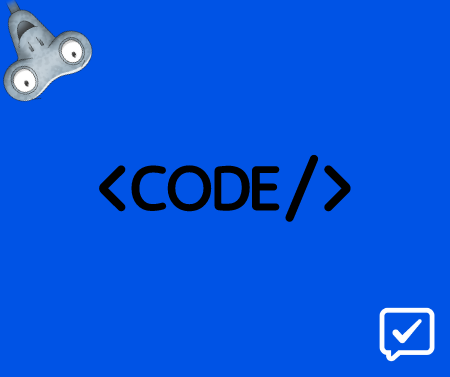
While “no-code” is not a new phenomenon, the pandemic’s push to move people online has certainly increased its popularity in recent years. And there’s no question about why. It’s a fantastic concept for anyone (especially us non-techies) looking to improve the way they run their business online.
However, it’s such a mysterious-sounding concept that it can be difficult to understand what it is, let alone how it works and what the benefits are (and when “low-code” is thrown into the mix, confusion ensues…).
With that being said, let’s take a deeper look into what no-code is all about.
So, What is No-Code?
No-code is a concept that allows individuals to build web and mobile applications without having to write any code (pretty obvious when you think about it…).
Instead, visual models that allow you to easily manage your data replace the complexity of coding. Instant previews of how the software will appear on mobile, tablet, and desktop are an excellent example of this.

As a result, no-code allows people to be creative without having to worry about not having prior coding experience. The approach to “constructing” becomes fairly simple; rather than having to build from the ground up (with numerous code inputs and headaches), you typically only need to “drag and drop” components or parts of an application. It’s almost like building a Lego house; instead of having to create the bricks from scratch (we’ll leave that to Lego), you simply start assembling the “pre-made” bricks until you have something that, hopefully, resembles the house you have pictured in your head.
While not needing any prior programming or coding experience is perhaps the most significant advantage of no-code application platforms, having some prior knowledge of how to define and articulate requirements and rules can of course be extremely beneficial.
The Benefits of No-Code Development
No-code development is appealing because it is simple to use and allows non-programmers to quickly create apps or workflows.

Because there is no steep learning curve, no-code can be ideal for companies with a backlogged development team because they can simply designate certain application development to their team’s “non-developers.”
Low Technology Barrier
As previously stated, the low technology barrier and learning curve of no-code development enable businesses to develop applications without the need for a professional developer on the team.
Better Agility
Because most development is done through a drag-and-drop interface, built visually with pre-built components, building apps is much quicker. Not only is testing generally automated (reducing development time), but collaborative agile methodologies make it easier for businesses to promote a new digital innovation strategy.
Drag-and-Drop Interface
One of the primary reasons why no-code development platforms have gained popularity and are rapidly expanding is their ease of use. It’s made possible by “drag-and-drop”, which is a key feature. Using this interface, you can easily drag and drop the function you need to build for your app, enabling you to complete the task quickly and bug-free.
Reduced Cost
Coding and app development can be costly, and hiring a developer only increases that cost. No-code platforms provide a cost-effective way to avoid what could be an expensive development process. You no longer need an expensive team of coders and developers; instead, all you need is a laptop, WiFi, and a reliable no-code solution. Suddenly, app development becomes faster and cheaper in the long run.
Increased Productivity
Because apps can be built at a much faster rate, the development team isn’t overburdened with requests from every other department. Plus, with a reduced backlog, fewer people have to wait for work to be completed. What used to take weeks or months to accomplish can now be achieved in a matter of hours or days.

Experience the power of efficient project management.
Sign up for free today!
Easily Changeable
Traditional coding has a significant disadvantage in that any changes to a function or feature can take a long time to implement. However, no-code eliminates this problem as changes can be carried out quickly and efficiently.
Integrations
Most no-code platforms support a wide range of integrations with other software, allowing businesses to connect their data and processes without having to duplicate or perform manual work. This is especially useful because most businesses use multiple applications and want to improve and automate collaboration and workflow.
Companies can easily integrate their project using a no-code platform with other third-party web applications by utilising API integrations.
The Disadvantages of No-Code Development
While it’s easy to see why no-code development is appealing to individuals and business owners, as with anything, it’s important to understand the hidden disadvantages and risks associated with its use.

As with any project, considering the total cost of ownership from the start is critical. And something that appears to be cost-effective at first may have major financial consequences later on.
A Good Understanding of the Project’s Requirements
Because no-code platforms are effectively “pre-built” code, it is crucial to determine whether the tool meets the needs of your project. Furthermore, your project will naturally evolve and change over time, so it’s equally important to ensure that the tool used at the start of your project is still as relevant and valuable as it was at the start.
Limitations to What You Can Build
As previously stated, because you are building with pre-made “Lego blocks,” you will naturally be limited in what you can build, even if you have a great creative mindset. You may still be able to build your Lego house, but once you want to add an extension or require your house to act more like a rocket ship, you realise there are limitations to what you can build with the blocks you’ve been given.
While no-code platforms typically provide a range of useful templates to meet a variety of use cases, there is a real risk of shifting your mindset from “what do I want to build?” to “what can I build?.” This can lead to costly and complex workarounds in order to find a viable solution to your specific needs.
So, the real question becomes, “Will it be more cost-effective to build something tailored to my project’s needs, or to try to bend my project to a pre-existing mould?”
A Lack of Control Can Lead to Security Concerns
When you use something pre-made with no-code, you lose control over your application (as opposed to custom development). It’s one thing to have no control or say over certain aspects of your technology, but failing to know your app inside and out can have disastrous consequences later on. This is especially the case with security and reliability.
What if your no-code platform provider is acquired, liquidated, or raises its prices?
Or even worse, what if they suffer an internal security breach, jeopardising your system and those who rely on it?
The Source Code is Not Yours
The future is an unpredictable place. If you decide to abandon your no-code platform, you will undoubtedly encounter “vendor lock-in” issues. This makes switching to another platform either difficult (and expensive) or impossible. As a result, your only chance of properly maintaining your application in the future is to rely on the original vendor.
If you are granted access to your application’s source code, it is most likely incomprehensible and devoid of clear documentation.
The end result? You may have a thorough understanding of what goes into and what comes out of your application, but you may be completely unaware of its implementation process.
No-Code vs. Low-Code
While it’s any non-developer’s (and probably every actual developer’s) dream to build anything they can imagine without writing a single line of code, that’s very much wishful thinking. No-code platforms, as we’ve seen, have limitations. The limits may differ, but they are limits nonetheless.

This is where the term “low-code” comes into play. This is a convenient way to bridge that coding gap. You can build the majority of the application without writing code, and then only write the parts that cannot be done on the platform. Often, you can do this directly in the platform without ever needing to set up a development environment.
|
No-Code |
Low-Code |
|
No coding required |
The core function is handled automatically, but some coding is required to complete the application’s development |
|
There is no prior coding experience required, and anyone can build apps with minimal training |
To build and connect applications, some prior coding experience is required |
|
As a “closed system,” there is no risk of broken changes if the no-code platform is updated |
As an “open system,” users must run tests to ensure that the platform continues to function properly after an update |
| No-code platforms are aimed at marketers who need to solve basic functional use cases |
Low-code platforms are designed for developers who want to build applications quickly |
The Impact of No-Code/Low-Code on Digital Services
Since the popularisation of no-code/low-code, a great deal of power has been given to non-technical individuals. Not only have businesses gained greater independence from their reliance on development teams, but web applications can now be built by non-developers with minimal effort and background knowledge.
Thanks to the influence of no-code/low-code, digital services can reduce development costs, improve software time-to-market, and respond more effectively to the ever-changing needs of their markets.
A common area of concern with no-code/low-code is the relevance of a developer in the development needs of a business. It is important to note that no-code/low-code is not a replacement for the services of a development team, but rather a mutually beneficial partnership. For example, while businesses reduce overhead costs, achieve goals faster, and focus more on how to make their products more efficient and appealing to their end-users, software developers are relieved of simple, repetitive, routine tasks. Instead, they can devote their time to technically complex ideas that will either add more value in the long run or simply cannot be completed by anyone other than a trained professional.

Both business users and developers can also work together on the same project and contribute valuable insights. No-code/low-code platforms greatly facilitate collaboration between IT and business teams because all participants understand what is going on.
Because most businesses cannot rely on out-of-the-box no-code/low-code platforms to meet their needs, digital services will never truly be able to detach themselves from the work of a development team. Companies will almost certainly need to add specific features that will assist them in meeting their business objectives or making their product stand out. This is particularly true in areas such as third-party integration and reporting. As a result, at least some parts of business applications must usually be coded. As such, a development team’s services are necessary.
Finally, as previously stated, no-code/low-code platforms benefit from a thorough understanding of how they work. As a result, enlisting the help of a development team is an excellent way to ensure that “low-code” does not lead to “low quality.” With that said, it’s safe to say that collaboration between businesses and IT teams isn’t going anywhere.
The Future of No-Code
With the Covid-19 pandemic changing our needs and priorities, it’s no surprise that no-code/low-code platforms have grown in popularity. For example, during the dramatic shift to remote work, the use of such platforms steadily increased as they aided businesses in their mission to overcome key digital hurdles. Individuals were able to find an effective way to digitalize workflows, improve customer and employee experiences, and increase the efficiency of commercial and operational teams.
No-code/low-code platforms have progressed from a function-specific tool. Now, individuals can truly own their automation and build new software applications with no coding while increasing organisational capacity.

With such platforms successfully equipping non-developers, it also alleviates the burden of the ongoing engineering and developer talent shortage. As a result, an increasing number of businesses and IT leaders can now use no-code/low-code to empower their current employees.
While no-code/low-code platforms are not without flaws, their benefits far outweigh their drawbacks. As we’ve seen, their popularity has only grown in tandem with the pandemic’s duration. And their effectiveness and agility have only gotten better over time as technologies improve.
When understood and used intelligently, no-code/low-code platforms are a digital force to be reckoned with.
Zenforms
Zenforms is the 6th product in the Zenkit Suite.
It is a free no-code form builder that allows you to construct forms and surveys without coding!
Zenkit’s latest no-code platform has a range of useful features such as duplicate checking, sub-forms, referencing, real-time collaboration, and plenty more!

Plus, Zenforms is completely GDPR compliant and data secure, so you know that your data (no matter where it comes from) is safe.
Zenkit’s adaptive form maker means that you can gather data from anywhere – receive employee feedback, collect customer emails, or simply engage with your target audience.
Zenforms can also be added to your website without coding! So, now you can ask the big questions without the code.






Leave a Reply